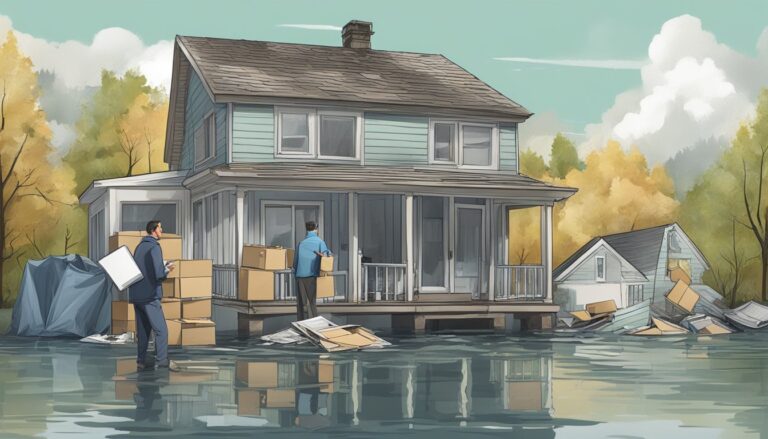Understanding Flood Insurance
Flood insurance is a type of coverage that protects property owners from water damage caused by flooding.
This insurance is not included in standard homeowners insurance policies, so a separate policy is necessary.
Floods can happen anywhere and can cause significant damage.
For example, just one inch of floodwater can cause up to $25,000 in damage.
This makes having flood insurance crucial for many homeowners.
The National Flood Insurance Program (NFIP) is managed by the Federal Emergency Management Agency (FEMA) and provides flood insurance to property owners.
It is delivered through a network of more than 50 insurance companies, as well as NFIP Direct.
You can purchase flood insurance through private insurance companies or an insurance agent.
There is typically a 30-day waiting period before a new flood insurance policy becomes active, so plan ahead.
Coverage limits for building property through NFIP policies are up to $500,000.
Personal property coverage limits are also up to $500,000.
Unlike federal disaster assistance, which is often a loan that must be repaid, flood insurance provides coverage that helps you recover more quickly.
If you have a federally backed mortgage, your lender may require that you have flood insurance.
Key Points:
- Flood insurance is not part of standard homeowners insurance.
- Managed by FEMA through the National Flood Insurance Program.
- Provides up to $500,000 in coverage for building and personal property.
- 30-day waiting period before coverage becomes active.
- Necessary for properties in flood-prone areas or with federally backed mortgages.
Understanding flood insurance ensures that you can protect your property from costly flood damage effectively.
Risk Management and Flood Zones
Managing the risk of flooding is crucial for protecting your property and finances.
Flood insurance is a key part of risk management, especially in areas prone to floods.
Natural disasters like heavy rain, melting snow, and coastal storm surges can cause significant damage.
Understanding flood zones can help you make informed decisions.
Flood zones are classified based on the likelihood of flooding.
The Special Flood Hazard Area (SFHA) indicates high-risk zones.
These areas are marked as Zone A or V. High-risk areas, such as near rivers or coastal regions, often require mandatory flood insurance.
Moderate-to-low risk areas are shown as zones B, C, or X on flood maps.
Though the risk is lower, purchasing flood insurance is still recommended.
Even low-risk areas submit a notable percentage of flood damage claims.
The National Flood Insurance Program (NFIP) helps manage flood insurance.
It works through over 50 insurance companies to provide policies.
You can check your flood zone on the Flood Map Service Center.
Natural disasters, such as prolonged rain or a levee dam failure, can lead to severe flooding.
The Mississippi River is a well-known high-risk area for floods.
Flood insurance helps you recover from water damage caused by these unexpected events.
Understanding the classification of flood zones can help you assess the risk and decide the appropriate level of insurance coverage.
Stay informed and prepared to protect your assets from the unpredictable nature of floods.
Claims and Recovery After a Flood

After a flood, you need to act quickly to recover.
The first step is to document the flood damage to your home or business.
Take photos of damaged areas and list your losses.
This will help when filing your insurance claims.
Contact your insurance agent to start your claim.
They can guide you through the filing procedure and explain your coverage options.
Homeowners insurance typically does not cover flood damage, so you need a separate flood insurance policy.
Flood insurance can cover various types of damages:
- Residential structures: Repairs for your home’s structure.
- Contents: Replacement of personal belongings.
- Pumps, furnaces, and water heaters: Repairs or replacements for critical appliances.
Your policy may cover additional living expenses if you need temporary housing during repairs.
This helps cover hotel and meal costs.
Understanding the actual cash value versus replacement cost is important.
Actual cash value considers depreciation, while replacement cost pays for new items.
For businesses, flood insurance helps you rebuild and recover losses from damaged inventory and equipment. Contents coverage is essential for protecting business assets.
Disaster assistance programs may also be available.
These can provide grants or low-interest loans to help with recovery.
If you live in a lower-risk area, a preferred risk policy might offer more affordable coverage options.
By quickly addressing flood damage and filing your claims, you can better protect your home, belongings, and livelihood from the impacts of such disasters.






